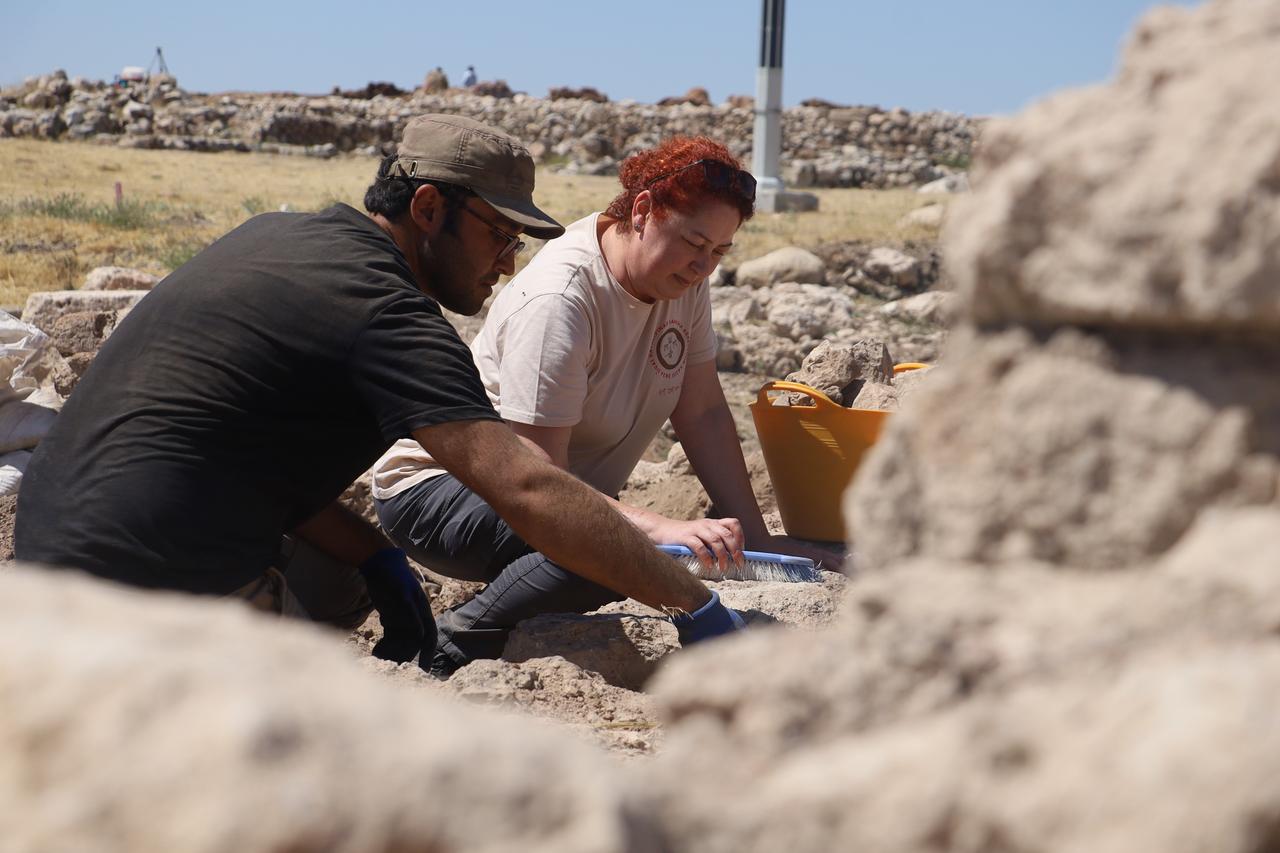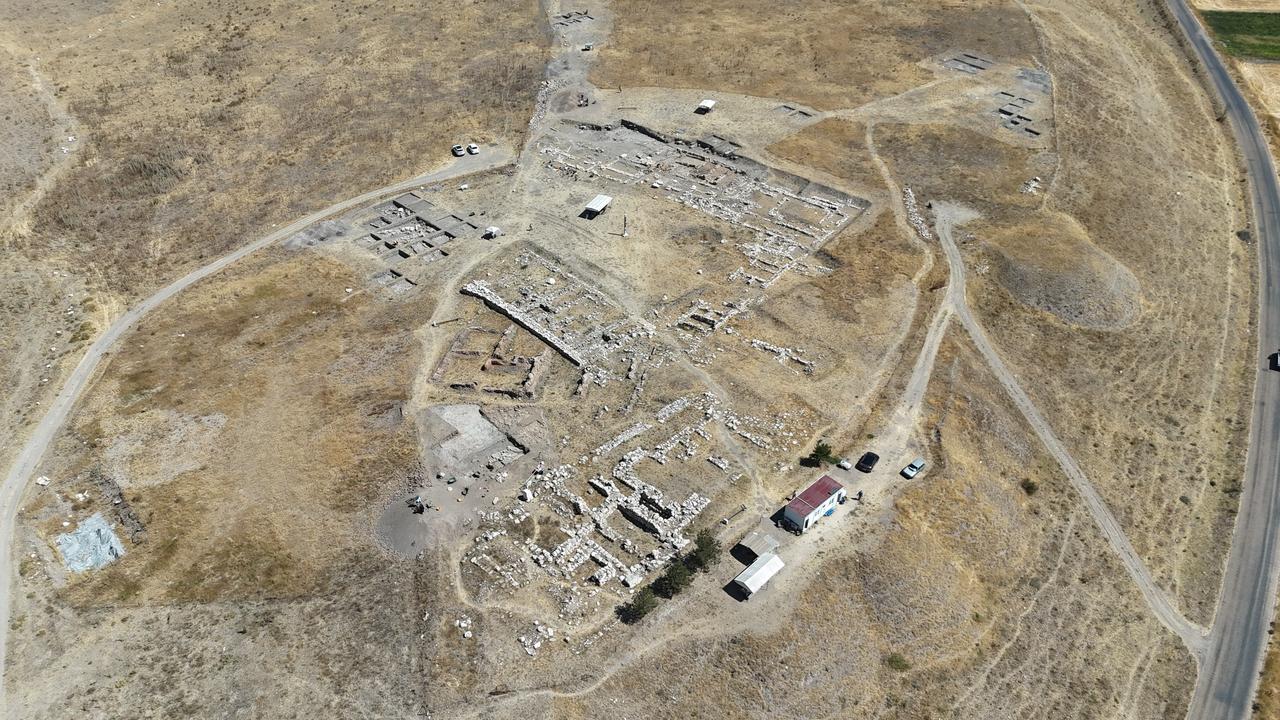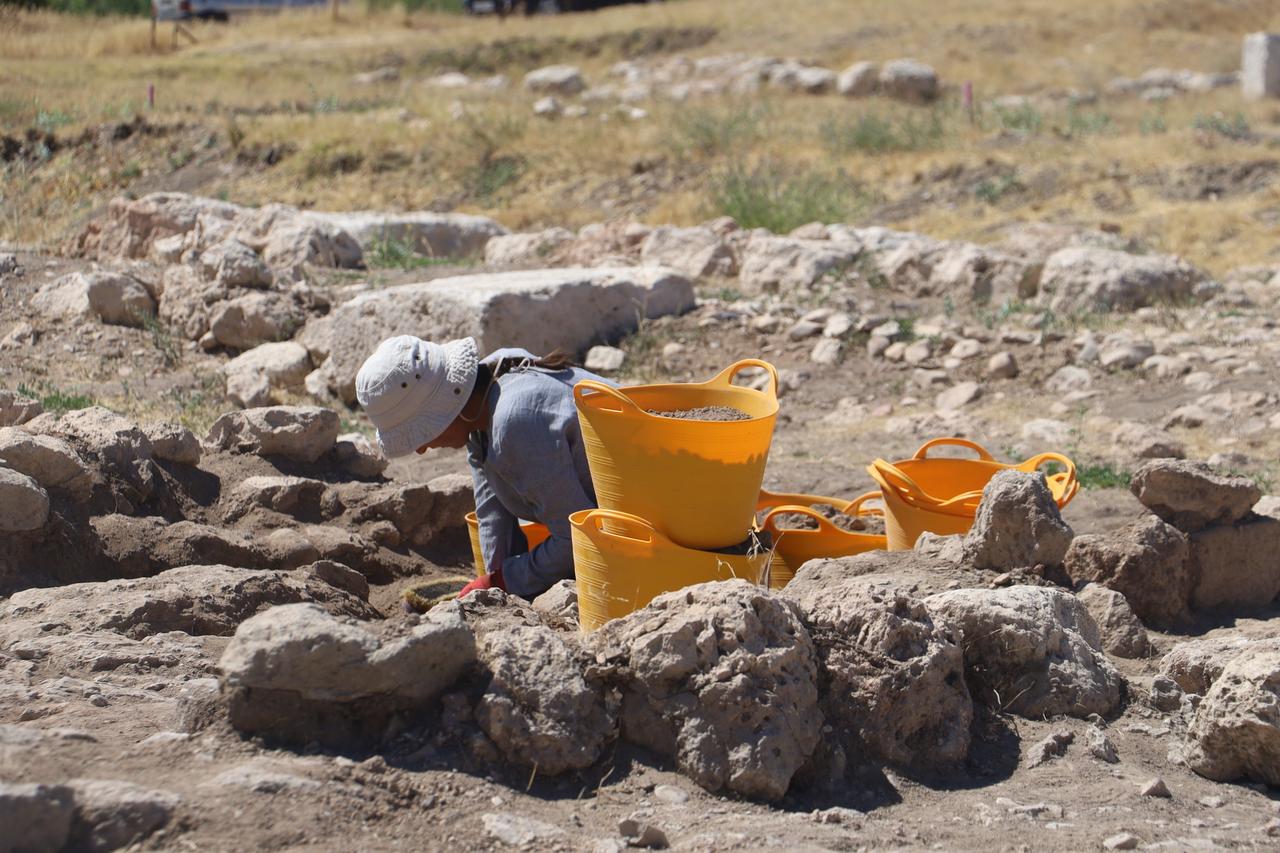
Archaeologists working at Kayalipinar in Sivas’ Yildizeli district have uncovered clear traces of the early Byzantine (East Roman Empire) period at the ancient city of Samuha, a major Hittite settlement and once one of the empire’s capitals in Türkiye.
The latest finds point to a cemetery zone with cross-incised grave covers, glass oil-lamp fragments, and coins that date activity up to the seventh century.

Project deputy director Professor Ozgu Comezoglu Uzbek of Istanbul University said the team is gathering “very important data” for the phase that continues until the seventh century and noted that early Byzantine occupation appears to cluster in specific parts of the site.
The assemblage includes everyday pottery, glass finds, and coins that help anchor the chronology.
The team identified a burial zone, confirming that the site functioned as a cemetery during the early Byzantine period.
Findings include grave covers with early cross carvings, glass lamp fragments, and coins, alongside objects recovered around the cemetery, such as a bronze earring and a bronze cross pendant. Nearby trenches produced small scent-bottle sherds, additional ceramics, and lamp pieces.

Evidence of later building phases sits directly over Hittite remains. In one sector, a surface interpreted as a possible Roman road lies above Hittite walls, while Byzantine structures were also built over those earlier foundations.
Material continues into the medieval horizon, with artifacts dating to the 12th–13th centuries. Beneath these layers, excavators are still bringing up Hittite cuneiform tablets.
Excavations at Samuha began in 2005 under the Sivas Museum Directorate with advisory support from Dr. Vuslat Muller-Karpe. The current project is directed by Associate Professor Cigdem Maner of Koc University.
“We started on 3 July and we are still working with full dedication on day 57,” Maner said, adding that the campaign is planned to continue until Sept. 15. She underlined that the site is producing significant information for both the settlement and the wider Eastern Cappadocia region.